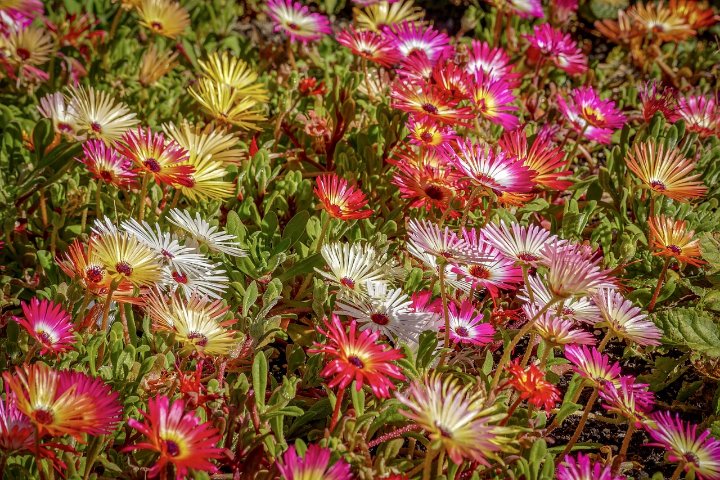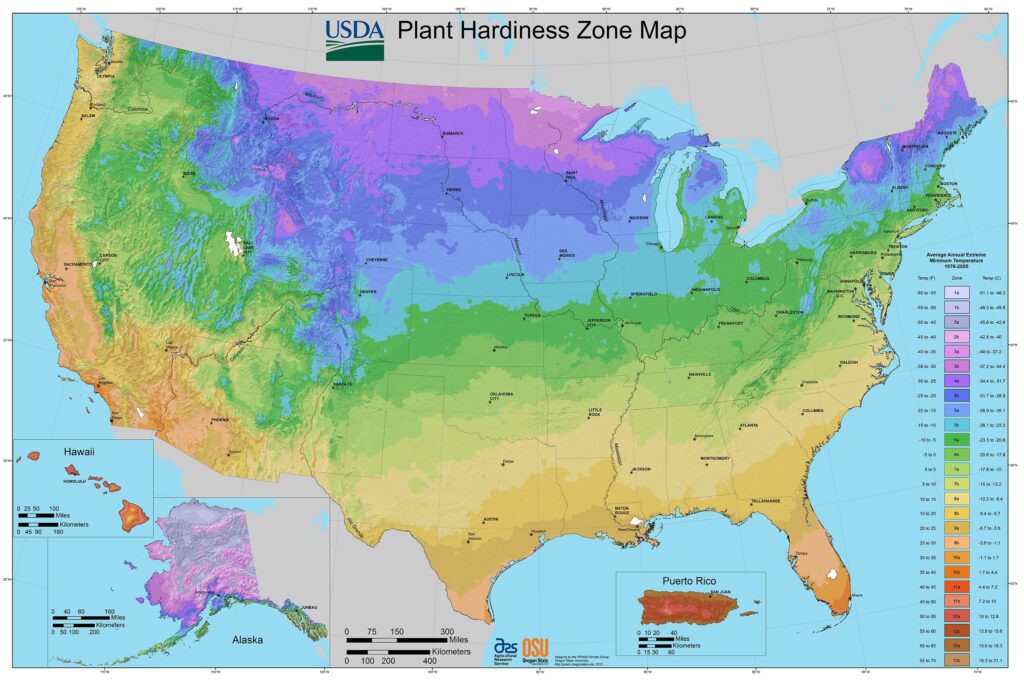Ice plants, also known as Delosperma, are low-maintenance succulents prized for their vibrant flowers and ability to thrive in hot, dry conditions.
Best Ice Plant Varieties
| Image | Name | Rating | Shop |
|---|---|---|---|
 | Ice Plant Ground Cover Seed Mix |  | |
 | Delosperma ‘Fire Spinner’ (Ice Plant) |  | |
 | Delosperma Cooperi Ice Plant Mountain Ground |  |
Ice Plant Hardiness Zones
Ice plants are adaptable and can thrive in USDA hardiness zones 6–10, making them suitable for a wide range of climates and growing conditions. Whether you live in a cooler northern region or a warmer southern area, you can enjoy the beauty of ice plants in your garden.
How Much Sun Do Ice Plants Need
Ice plants thrive in full sun, requiring at least six to eight hours of direct sunlight each day to flourish. Plant them in a location where they can soak up the sun’s rays and bask in its warmth. Adequate sunlight ensures robust growth and abundant flowering throughout the growing season.
Ice Plant Soil Requirements
When it comes to soil, ice plants prefer sandy, well-drained soil that allows water to pass through quickly. Aim for a neutral soil pH to provide optimal growing conditions for these resilient succulents. Proper soil preparation ensures healthy root development and vibrant blooms.
Ice Plant Spacing
Ice plants typically grow to a height of 3–6 inches tall and spread 12–24 inches wide. When planting ice plants, space them accordingly to allow for adequate air circulation and room for growth. Proper spacing ensures that each plant has enough space to thrive and showcase its colorful flowers.
Ice Plant Temperature Requirements
While ice plants are drought-tolerant and can withstand hot, dry conditions, they are sensitive to cold temperatures. Avoid planting ice plants in areas prone to frost or freezing temperatures, as this can damage the plants and inhibit growth. Aim to provide consistent temperatures within their preferred range to promote healthy growth and flowering.
Ice Plant Fertilizer Requirements
Ice plants have modest fertilizer needs and typically benefit from compost or a slow-release fertilizer applied once or twice during the growing season. Avoid over-fertilizing, as this can lead to excessive foliage growth at the expense of flowers. Follow the instructions on the fertilizer package carefully to ensure proper application.
Ice Plant Water Requirements
One of the notable characteristics of ice plants is their drought tolerance, making them an excellent choice for water-wise gardens. Water your ice plants sparingly, allowing the soil to dry out between waterings. Overwatering can lead to root rot and other moisture-related issues, so it’s essential to practice moderation when watering your ice plants.
Ice Plant Humidity Requirements
Ice plants thrive in dry climates and prefer low humidity conditions. Unlike some other plants that require high humidity levels to flourish, ice plants are well-suited to arid or semi-arid environments. This makes them an ideal choice for gardeners in regions with hot, dry summers.
Ice Plant Pests and Diseases
While ice plants are relatively pest and disease-resistant, they can occasionally encounter issues with aphids, mealybugs, mold, and fungus. Monitor your plants regularly for signs of pest infestations and take appropriate measures to control them, such as using insecticidal soaps or natural predators. Additionally, provide adequate air circulation and avoid overwatering to prevent fungal diseases.
In conclusion, growing and caring for ice plants is a straightforward and rewarding endeavor that allows gardeners to enjoy colorful blooms and lush foliage with minimal effort. By providing adequate sunlight, well-draining soil, and minimal water, you can cultivate healthy ice plants that add beauty and texture to your garden year-round. With their resilience and adaptability, ice plants are sure to become a favorite among gardeners of all skill levels.













